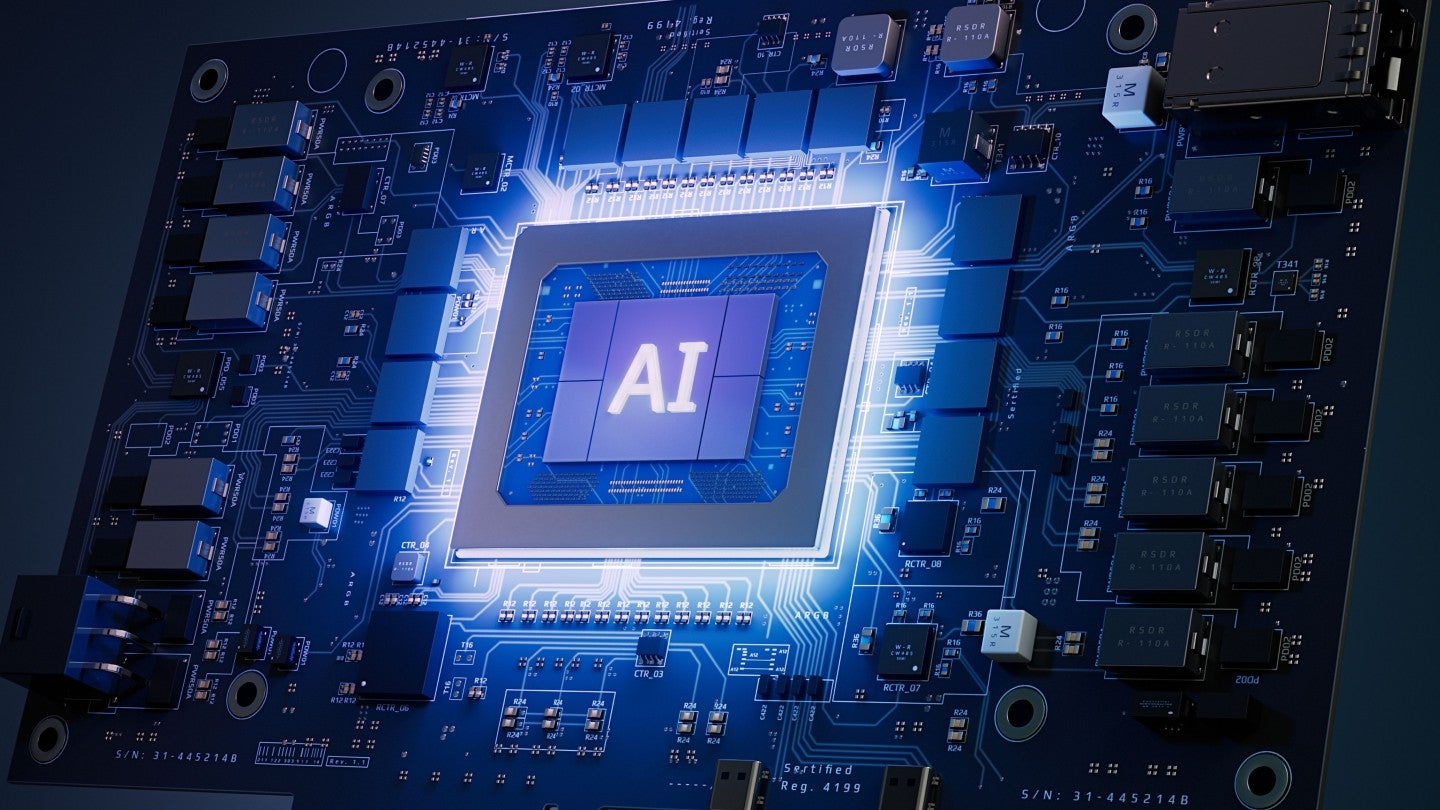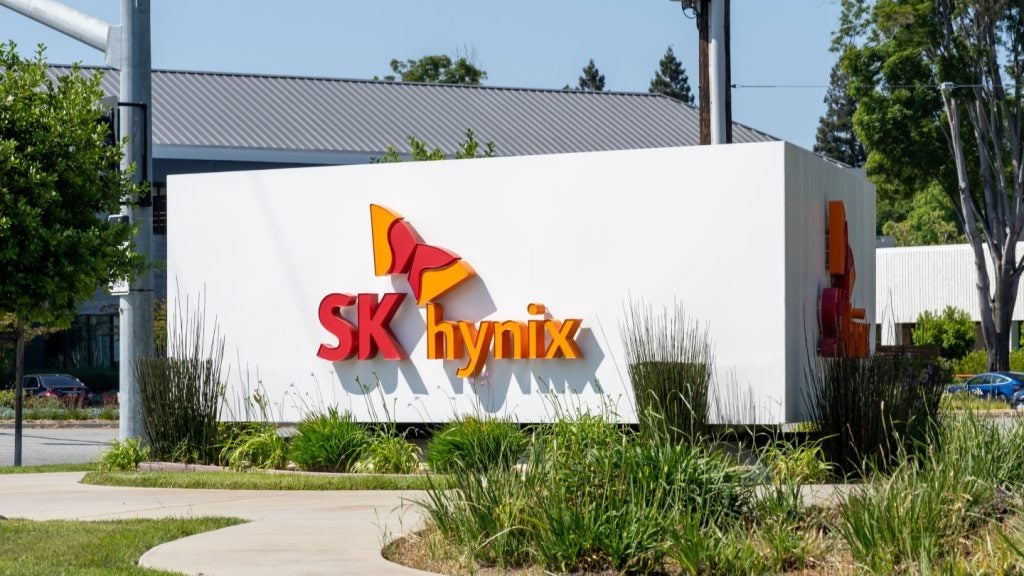
Underpinning the Fourth Industrial Revolution of AI and digital transformation in general is the chip industry.
AI is driving innovations in chips; however, the industry is still facing monopolisation, skills shortages, and energy efficiency and geopolitical challenges, which are set to increase over the coming years.
Ahead of GlobalData’s webinar The New AI Age Calls for a Revamped Chip Industry, principal analyst Isabel Al-Dhahir, who will be co-hosting the webinar, unpacks what is meant by next-generation chips, industry trends, market leaders and what is meant by the term ‘tech nationalism’.
Kris Cooper (KC): What is meant by ‘next-generation chips’? Why are they significant?
Isabel Al-Dhahir (IAD): Next-generation chips represent the next frontier of semiconductor technology, encompassing advancements in design, materials, manufacturing processes, performance and packaging. These chips are crucial to the digital transformation driven by the proliferation of AI tools, as well as the development of autonomous vehicles and quantum computing. They are used in cutting-edge consumer electronics, data centres and specialised computing systems with demanding computational requirements.
It is important to remember that the term ‘next-generation chips’ is fluid, evolving alongside technological advancements. In 2024, this term generally refers to chips with feature sizes below three nanometres. However, it also includes chips based on innovative architectures such as quantum chips, chiplets and photonic processors.
KC: What are the key challenges the chip industry currently faces?
IAD: Demand for chips will soar due to the growing importance of AI, data centres, the Internet of Things, consumer electronics and military technologies. Meeting the needs of these expansive markets is already straining manufacturing capacity. Additionally, producing semiconductor hardware and infrastructure, which powers data centres and trains large language models, is highly energy-intensive.
The implications of market monopolisation on next-generation chips are another cause for concern, given how pivotal they are to sectors including consumer electronics, automotive, telecoms and healthcare. Monopolies tend to emerge in parts of the semiconductor value chain due to high start-up costs and very large economies of scale. Monopolised markets disincentivise new players and stall R&D. Singular control over next-generation chip production and sales can excessively influence market prices, technology standards and distribution. Furthermore, trade disputes and geopolitical tensions risk destabilising monopolised markets, leaving a void that is difficult to replace and rapidly undermining a nation’s technological sovereignty. This is evident in China, where the US export restrictions on ASML’s extreme ultraviolet machines have severely impacted its advanced chip industry.
Exacerbating the precarious position in which the chips industry finds itself is the compounding skills shortage. SEMI anticipates a global shortage across the industry of one million jobs by 2030. This scarcity hampers innovation and intensifies competition among companies vying for talent. Chip companies must make greater efforts to attract and retain fresh talent. The strikes at Samsung’s South Korean facilities in early July strongly indicate that working conditions and incentives need improvement.
KC: Who could rival Nvidia’s current AI chip dominance?
IAD: Nvidia currently holds a dominant position in AI chip design, boasting a market share of more than 90%. This achievement can be attributed not only to the quality of its hardware, but also to the widespread adoption of its CUDA parallel computing platform, which has become an industry standard.
While Nvidia’s hegemony is expected to persist, it is important to acknowledge the potential for gradual erosion of its market share. One strong contender in this space is AMD. AMD has been actively expanding its talent pool through strategic acquisitions including Silo AI – Europe’s largest AI lab – Mipsology and Nod.ai.
Additionally, AMD has developed ROCm, an open-source alternative to Nvidia’s CUDA platform. Another interesting yet future-looking actor in this space is Cerebras, a start-up working on wafer-scale AI chips that promise impressive performance and power efficiency. Cerebras has established partnerships with Dell and Qualcomm.
Additional market shifts are being observed. Major technology companies including Alibaba, Amazon, Apple and Baidu have begun developing custom chips internally, thereby decreasing their dependence on monopolies like Nvidia. While a significant learning curve is involved, if these tech giants gain a competitive edge through proprietary in-house design, it could significantly impact Nvidia’s market share.
As the competition intensifies, it remains to be seen how Nvidia will maintain its position in the evolving market.
KC: Will greater energy efficiency of next-generation chips help to reconcile concerns about AI’s energy consumption?
IAD: The chips industry is currently grappling with the issue of sustainability. Both the fabrication of chips and their operation require a significant amount of power, to the extent that OpenAI CEO Sam Altman has stated that an energy breakthrough is necessary to power the future of AI.
Efforts are being made to design next-generation chips with a focus on power efficiency. However, chip design alone is not the only aspect of the problem. Energy consumption has increased due to the proliferation of data centres supporting cloud computing, big data and AI. According to the International Energy Agency, global data centre electricity demand is estimated to be twice as high in 2026 as it was in 2022. In the US alone, data centres are projected to account for nearly 6% of national electricity demand in 2026.
In light of these challenges, tech companies are increasingly turning to renewable energy sources to reduce operating costs and mitigate their carbon footprint. One potential solution is using nuclear fusion to power fabrication facilities and data centres. For instance, Microsoft has partnered with Helion to provide fusion power by 2028.
KC: What is tech nationalism and how does it relate to the AI and chip industry?
IAD: Tech nationalism refers to national efforts to achieve self-sufficiency and dominance in the semiconductor industry. This involves policies and strategies to reduce dependency on foreign suppliers and protect domestic intellectual property.
Amid the growing trend of technology nationalism and the crucial role of advanced chips in the development of AI, the semiconductor industry has become highly politicised. Starting in 2018, the US has strategically used its chip IP (intellectual property) to restrict China’s access to vital technologies including chip design software, chip manufacturing equipment and the chips themselves. This approach aims to impede China’s progress in acquiring advanced AI chips and foster the growth of a self-reliant US semiconductor industry.
Other regions are also engaged in repositioning their semiconductor industries. The EU, for instance, is not seeking direct competition with the US or China. Nevertheless, in light of the global chip shortage, it is keen on bolstering self-reliance and attracting new investments, as highlighted by its €43bn ($47bn) Chips Act. Depending on geopolitical circumstances, this approach may also position the EU as a crucial supporting player for either the US or China. Notably, Germany has become a hub for new operations by Intel, TSMC and Wolfspeed.
GlobalData’s webinar The New AI Age Calls for a Revamped Chip Industry will take place on 25 July and delves into rising demand in the chip industry, market monopolisation, growing energy demands and skills shortages.









